Printing History Videos: Some Bookmarks
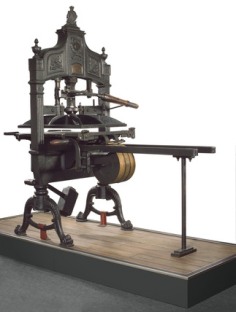 This fall I will be teaching a course on printing history. This post is really just a set of bookmarks for me–especially for the early weeks on Gutenberg and the early printing. Despite my desire to do so this semester, the nature of the course doesn’t allow extensive field trips, so hands-on experience will unfortunately be limited.
This fall I will be teaching a course on printing history. This post is really just a set of bookmarks for me–especially for the early weeks on Gutenberg and the early printing. Despite my desire to do so this semester, the nature of the course doesn’t allow extensive field trips, so hands-on experience will unfortunately be limited.
Nevertheless, thanks to the attached videos, students will have some sense to how these machines worked and the tedious work required to spawn this “revolution.” These will be on interest, I think, to anyone teaching or learning about book history or print culture.
(This is just my short list…It’s amazing to see how many helpful sites and videos are free and readily available online.)
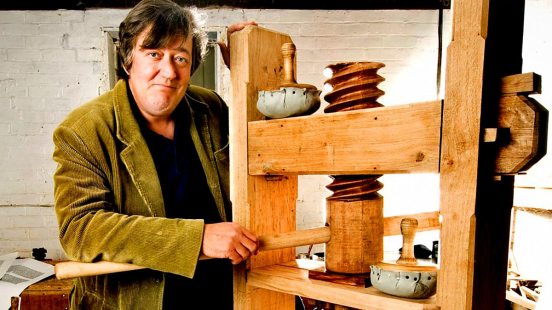
Among my favorites is from the BBC’s The Machine That Made Us (2009) with actor and writer Stephen Fry. Fry enlists of group of expert historians, printers, and craftsmen to guide him through the journey of retracing Gutenberg’s footsteps in the invention of the printing press. Although this is a class set in the Visual Arts Department, Fry’s approach is one that I like to simulate in selected English and History courses as well. (I should post some assignments and student experiments this semester…)
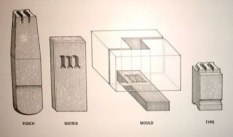 Fry’s investigation combines the archival sleuthing of a historian and the experiential, hands-on challenges of an artist. He travels to France and Germany, following the trail of Johannes Gutenberg (painted as artist, inventor, and entrepreneur) and his medieval world.
Fry’s investigation combines the archival sleuthing of a historian and the experiential, hands-on challenges of an artist. He travels to France and Germany, following the trail of Johannes Gutenberg (painted as artist, inventor, and entrepreneur) and his medieval world.
In the process, he learns how paper was made in the 15th century and visits a metal foundry (working with printer and historian Stan Nelson) to make his own type (in his case, the letter “e”, which is an exact replica of those used in the Gutenberg Bible). Only ink-making is excluded from the process. It is a wonderful journey that shows us all the value of such a journey for our own studies . . . and the value of getting your hands dirty.
Of course, for this course, Gutenberg and his press is just one area/era of study. We will move through wood blocks and moveable type to lithography, off-set printing, screen printing to xerography, inkjet, laser jet and 3D printing. In other classes, I like students to “play” or work with these technologies, to see how they work and how they are put together. This is vital to not only understand the innovations and styles of past artists and thinkers but also in moving forward with students’ own experiments (and their investment in the material itself).
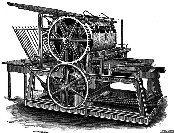 Working with each of these tools shows students how new technologies built upon previous modes and models. This is my approach to teaching multi-modal composition and Digital Humanities. I know that, despite being well-versed on their phones & social media, students are often intimidated by digital tools (and technology in general). And I like to encourage students to start small.
Working with each of these tools shows students how new technologies built upon previous modes and models. This is my approach to teaching multi-modal composition and Digital Humanities. I know that, despite being well-versed on their phones & social media, students are often intimidated by digital tools (and technology in general). And I like to encourage students to start small.
How small? In some classes, referring to Walter Ong’s work on the shift from Orality to Print, I will encourage that they go back to the beginning of bookmaking and letter-writing: the transcription of texts. And some students take up this challenge with cheap quills, dip pens, and other calligraphy sets and a good supply of bottled ink and candles (since most of their homework is done at night). More on teaching the Digital Humanities soon…
Although students might giggle at the dated 1940s and 50s series on printing (and there are dozens of related films to choose from), the films often still serve as good introductions (to these dated or out-moded technologies) and, in this case, offer a good general sense of–a clearer look into–the processes involved in printing, etc. Keeping in mind they are the product of 1950s America’s consensus culture and education system, I do enjoy watching these educational videos produced by Hollywood’s Bailey Films. In some respects, they were ahead of the curve.
The Videos

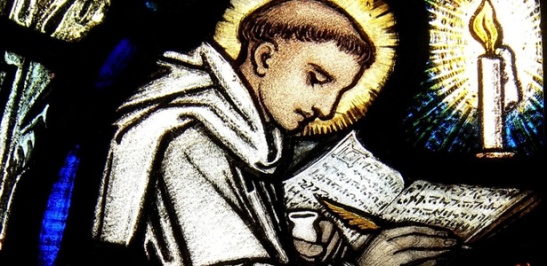


Pingback: Paper-making History: Some Bookmarks | K. A. Wisniewski
This is a great set of videos! I’m bookmarking a few myself! I loved the BBC documentary with Stephen Fry! I bet this was a fun class…Thanks for posting!
LikeLike